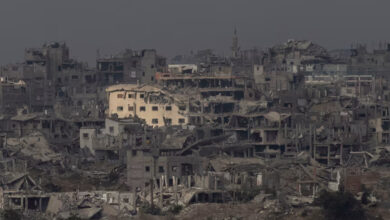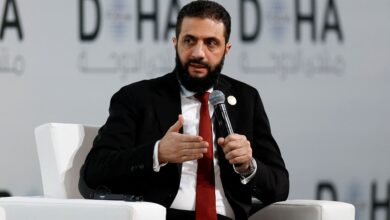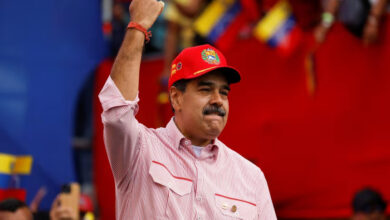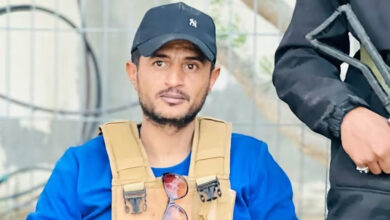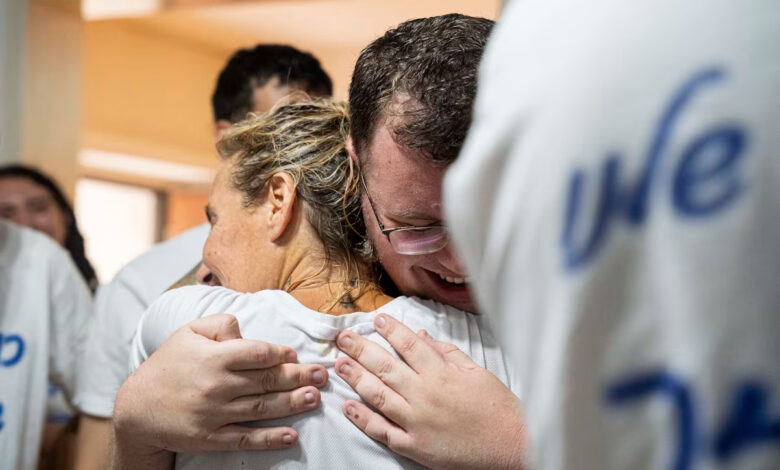
Two years ago, almost nobody in Israel could point to Nir Oz on a map.
Now, it’s synonymous with October 7, 2023.
Located just three kilometers (1.9 miles) from the Gaza border, this small agricultural kibbutz was home to about 400 people who lived peacefully among quiet tree-lined paths before the war.
That all changed during the first hours of the terror attack, when the kibbutz was all but burned to ashes, with over a quarter of its residents murdered or abducted – infants, the elderly and entire families among them.
Many members of their community were kidnapped by Hamas and affiliated groups that day and taken captive in Gaza. Nine of their members remained there for 737 days.
Those who lived here before the war have yet to return. On Monday, the community gathered in the city of Kiryat Gat – their temporary community residence – as they waited for the remaining hostages to return to Israel as part of the ceasefire agreement, eager to see their loved ones back home.
For them, the US-brokered deal signals the end of their living nightmare, allowing their community to begin the process of healing and rebuilding.
Inside a community hall early Monday morning, Rita Lifshitz diligently organized the refreshments for the gathering. Her in-laws were taken hostage on October 7. Yocheved Lifshitz was returned after 17 days in captivity, but her husband Oded was killed, and his body was brought back in February this year as part of the last deal to release hostages and prisoners.
She proudly pointed at the series of wine bottles set along the table. Now, they can be sipped with joy. She looked at the bracelets on her right wrist that she, like many Israelis, wears in support of the hostages. “I hope everyone comes back so I can finally remove them,” she said.

In the middle of the room, a large screen showed the developments of the day, and members of the kibbutz were rapt with attention as they searched for the faces of their communities’ four living hostages, set to be released: Matan Zangauker, Ariel and David Cunio and Eitan Horn.
After a few hours, Rita suddenly raised her arm and declared with excitement that she had gotten the first photo that Silvia Cunio shared of her two sons. “Here they are,” she exclaimed as the first group of hostages were released by Hamas.
In a scene of cheers and tears, she was enveloped by the crowd.
“We are so overjoyed that they are coming back,” Dalit Ram Aharon said, standing next to a box of freshly printed t-shirts made for the occasion showing photos of the returnees. She took off the shirt calling for the hostages’ release and put the new one on.
“There were moments when I didn’t believe it would happen. We couldn’t focus on anything else while they were still there,” she said.
“Soon we will be able to set the struggles aside.”
But as the group began to prepare for the second group of hostages to be released, the mood changed. The news was no longer only about the hostages.
The arrival of US President Donald Trump interrupted the televised coverage in a way they were not anticipating.
It may have been the shortest visit ever by a sitting US president, but while Trump was on the ground, he dominated coverage of the news, taking over the day’s narrative in a way that only he can. Trump made it clear that the end of the longest war in Israel’s history was his doing, and the country watched his every move for the few hours he was on the ground.
As Trump’s motorcade made its way up from Ben Gurion airport to the Knesset – Israel’s parliament – in Jerusalem, the broadcast gradually evolved into a split screen.
The audience clamored for more footage of the hostages, longing for any clip that would show even the briefest glimpse of their loved ones. But those clips were suddenly missing from the news broadcasts, replaced instead by a convoy carrying Trump on an Israeli highway.
The abrupt shift sparked confusion in Kiryat Gat, with the crowd keen to see more of the long-awaited reunions and less of the unfolding political spectacle.

“So many things are happening at the same time,” said Shlomo Margalit, a veteran Kibbutz member.
“I feel like saying – wait a minute – we’re not done yet. Our folks are not home yet.”
Another kibbutz member approached a local TV correspondent, urging their channel not to stop airing the images of the returning hostages even as the high-level speeches at the Knesset began.
In the halls of Israel’s political power, “a historic dawn of a new Middle East” was underway, according to Trump, who addressed a cheering house full of lawmakers. Despite a ceasefire agreement whose next phase lacks crucial details, Trump declared the end of a painful chapter for Israelis and Palestinians.
Israeli Prime Minister Benjamin Netanyahu lavished praise on the US president, calling him “the best friend Israel has ever had in the White House.”
“When others were weak, you were strong. When others were fearful, you were bold. When others abandoned us, you stood by our side,” Netanyahu said.
Trump returned the favor, calling him a courageous leader and crediting him with what he defined as an Israeli victory.
“Israel, with our help, has won all that they can by force of arms. You’ve won. I mean, you’ve won,” he said.
The American president was in his element, often departing from prepared remarks in an address that extended for an hour in front of a crowd that was more than happy to applaud at every pause. In one stunning moment, Trump turned to Israeli President Isaac Herzog and asked him to pardon Netanyahu, who is facing a long-running corruption trial on charges of bribery, fraud and breach of trust.
Trump – no stranger to legal woes himself – mocked the wrangling and said: “Cigars and champagne – who the hell cares about that?”’
Netanyahu looked on, smiling. In the moment, Trump commanded the attention of an entire nation, and Netanyahu was happy to follow where Trump led.
Trump also touched on his future thoughts for the region without providing any concrete details.
He expressed his “firm hope and dream” that the Abraham Accords – which saw Israel normalize relations with the United Arab Emirates, Bahrain and Morocco in Trump’s first term – would expand and “turn out to be everything that we thought they would.”

Trump’s dreams even bordered on diplomatic fantasy as he proposed a peace between Israel and Iran – who fought a 12-day war this June.
“Wouldn’t that be nice?” Trump said, as Netanyahu reacted with a hesitant giggle.
But Trump circumvented the pressing questions about what post-war Gaza will look like and how an international security force will take shape. This was Trump’s moment, and he would not be distracted from his victory.
Trump tried to continue the diplomatic celebrations by tempting Netanyahu to accompany him to his glitzy summit in Sharm el-Sheikh, Egypt, to discuss Gaza’s future with a gathering of world figures, including the chairman of the Palestinian Authority Mahmoud Abbas.
The Israeli leader initially accepted the invite, only to backtrack two hours later. The official reason given was the proximity to a Jewish holiday. But behind closed doors, officials said Netanyahu didn’t want to risk being photographed with Abbas, whom he has attacked and tried to weaken for years.
Despite this minor diplomatic miss, Trump and Netanyahu were unfazed. They basked in the spotlight of history.
Back in Kiryat Gat, the community members of Nir Oz were frustrated, waiting for the coverage to return to their own historic moment – the reason they had gathered together in the first place. Though they were jubilant for the end of the war and the return of the hostages, they mourned the deceased hostages who had yet to return. After two years of war, Israel needed to begin healing from its past, not just celebrating its future.
“I came here to feel, even a little, the sense of togetherness,” said Amir Alfassa. “This day fills the soul. Finally seeing this – even if it’s too late – still brings comfort and incredible energy.”
Eventually, the community of Nir Oz turned to their mobile devices. Within minutes, a close circle of friends and family surrounded one phone with tears, where they were able to see the remaining hostages – many from their community – gain their freedom again.
As the coverage continued, news that only four of the 28 deceased hostages would return remained an open wound. Five of their own were still inside the enclave. Even after two years of war, closure would not come for everyone yet.

